From the University of Florida Honey Bee Research and Extension Laboratory – Part 1
By: Jamie Ellis
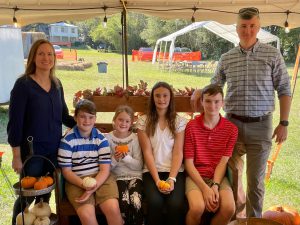
Figure 1. The author (Jamie) and his family.
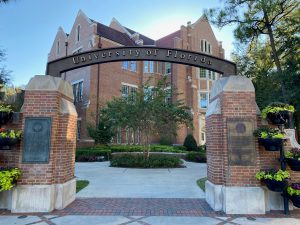
Figure 2. The University of Florida. Photo: Chris Oster, University of Florida.
Hello everyone. My name is Jamie Ellis (Figure 1) and I work at the University of Florida (UF – Figure 2) Honey Bee Research and Extension Laboratory (HBREL). I have worked for UF since August 2006. When I was hired, Jerry Hayes (editor of this distinguished journal) was the head of the Apiary Inspection Section for the Florida Department of Agriculture and Consumer Services, Division of Plant Industry. He managed Florida’s Apiary Inspection Program at the time. Those were good years. Jerry and I worked on a number of different research and extension initiatives and became quite good friends during the process. In early 2022, Jerry reached out to me to see if I would be willing to write a monthly series in 2023 dedicated to what my team and I do at the HBREL. He was hoping that this would jumpstart a yearly series in which he would be able to highlight different bee labs around the U.S. I was humbled that he would ask us to be first, and I was incredibly excited about the prospect of sharing with Bee Culture’s readers what really happens at honey bee laboratories at a state university. I saw this as a wonderful opportunity to peel back the cover and let beekeepers peek into the everyday work of a bee lab.
I discussed the opportunity with members of my team and everyone jumped at the chance to share what they do in the lab. We instantly started to work trying to develop an outline for the year, i.e. what topics we would discuss and the appropriate order to introduce the topics to you, the reader. You see, honey bee laboratories are complicated places, with diverse teams, target audiences, responsibilities and infrastructure. If my team and I do our job well, you will have a good understanding of how bee labs work, how we measure success and how team members fill their time.
Before getting too far into the process, I stress that no two laboratories are created equally. We all have different infrastructure, expertise, funding streams, team members, responsibilities, etc. Recognizing this, we will do our best to tell you how we do things at UF, while emphasizing that our way is not the only way to manage a bee lab. Now, on to the schedule of articles for 2023…
January: Overview of the HBREL at UF (the current article)
February: Honey bee/beekeeping teaching programs
March: Research on honey bees
April: Apiculture extension (part 1)
May: Apiculture extension (part 2)
June: Roles in a typical honey bee lab
July: How labs are funded
August: The lab’s physical infrastructure
September: What it takes to run a laboratory effectively
October: Professional development in the lab
November: Members of the HBREL team and what they do
December: The HBREL’s most notable successes/contributions to the beekeeping industry
Of course, we are using this series of articles to share a bit about who we are and what we do at the HBREL. More importantly though, we are using this opportunity to demystify how bee labs generally function when striving to provide services to beekeepers everywhere. So, let me start from the top…
What institutions host honey bee laboratories?
Any number of institutions can host honey bee laboratories. The federal government, state governments, private companies and state institutes of higher learning (colleges and universities) can manage these labs. For example, the U.S. government manages honey bee laboratories housed in its United States Department of Agriculture (USDA), Agricultural Research Service (ARS). These are the USDA-ARS honey bee research laboratories. They include laboratories in (1) Baton Rouge, LA (Honey Bee Breeding, Genetics and Physiology Research Laboratory); (2) Stoneville, MS (Pollinator Health in Southern Crop Ecosystems Research Laboratory); (3) Tucson, AZ (Carl Hayden Bee Research Center); (4) Davis, CA (Invasive Species and Pollinator Health Research Laboratory); and (5) Beltsville, MD (Bee Research Laboratory). Staff at each of these laboratories specialize in certain areas of honey bee research. For example, the bee lab in Baton Rouge is known for breeding honey bee stock. The bee lab in Beltsville is the primary laboratory whose members study honey bee pests and pathogens. The research scientists at these labs manage teams of individuals dedicated to honey bee health and the sustainability of beekeeping. The scientists usually have no obligation to teach students or provide extension programming. Instead, they are employed mainly to conduct research on honey bees.
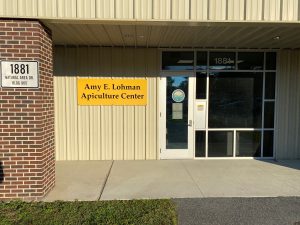
Figure 3. Amy E. Lohman Apiculture Center: home of the Apiary Inspection Section of the Florida Department of Agriculture and Consumer Services, Division of Plant Industry. Photo: Chris Oster, University of Florida.
State governments also can manage honey bee laboratories, usually within the auspices of the state’s apiary inspection program (Figure 3). Even still, not many state inspection programs house honey bee research laboratories. If they do, it is usually to provide disease/pest diagnostic services for resident beekeepers of that state.
There are a few commercial entities that manage honey bee laboratories of some sort. Many of these are research and development laboratories for companies that include a focus on honey bee health. The list also includes companies that create and sell pesticides, companies such as Bayer or Syngenta. In this case, the lab’s scientists usually investigate the impact of pesticides on honey bees and other pollinators through ecotoxicology divisions within the companies. There are also private contract laboratories that provide pesticide screening services for the pesticide manufacturers.
The vast majority of honey bee laboratories in the U.S. are housed in the nation’s many state colleges and universities, both private and public. Any college or university throughout the U.S. can host a honey bee laboratory. Prospective faculty who specialize in honey bees can be hired into many types of college and university departments. These include departments of entomology (insect science), biology, neurobiology, zoology, mathematics and agriculture, among many others. These departments will typically advertise for a professor with qualifications in a specific discipline (ecology, physiology, behavior, molecular genetics, etc.) that would permit one to study honey bees in the discipline being advertised. For example, a department may advertise for a molecular geneticist whose job it will be to teach courses and conduct research on topics related to molecular genetics. The department may not care what the study organism of the prospective candidate is; rather, they are hiring a particular discipline specialist. Thus, you can find professors of many disciplines scattered across multiple departments types, all using honey bees as the study model in their discipline. There are probably many more scientists studying honey bees than most beekeepers are aware exist, largely because most of these scientists are not mandated to work with beekeepers directly. Enter the Land Grant University…
What is so special about Land Grant Universities?
As noted, I work for UF. UF is a large university (55,000+ students) with a main campus in Gainesville, Florida and satellite campuses around the state. UF is a special type of university called a Land Grant University (LGU). LGUs differ in function and structure from those of other colleges/universities scattered throughout the U.S. They were created through the Morrill Acts of 1862 and 1890, and additionally through an Act of Congress in 1994. Through these acts, the federal government ceded federally controlled lands to each state to establish public universities. The 1862 LGUs were the first such universities established. The 1890 LGUs are historically black colleges and universities (HBCUs), while the 1994 LGUs are Native American tribally controlled colleges and universities.
Why create LGUs at all? Think about the early years they were established. At the time, advanced education was available only to a privileged few. Yes, there were wonderful universities such as Harvard, Yale, Princeton, etc. However, most people could not afford or qualify to attend those universities. Furthermore, folks living in rural areas or from minority backgrounds had little-to-no access to colleges or universities of any type. Thus, the LGU system represented a partnership between the federal and various state governments to provide education to and for the masses.
How can you spot a LGU? Every U.S. state and territory has at least one LGU. Many have more. They are often the universities with the name “University of Something,” “Something State University,” or “Something A&M University.” For example: University of Florida, University of Georgia, University of Minnesota, University of Puerto Rico, The Ohio State University, Pennsylvania State University, Texas A&M, Florida A&M, Oregon State University, etc. This is not a hard and fast rule as not all LGUs follow this pattern, for example: Auburn University is Alabama’s 1862 LGU, Clemson University is South Carolina’s and Cornell University is New York’s. There are wonderful maps online that show the 1862, 1890 and 1994 LGUs in each state. Just Google “map of U.S. Land Grant Institutions” and you will see the LGUs nearest to you. This is a helpful cheat as university honey bee programs are often nestled in the nation’s LGUs.
What makes LGUs different from other colleges and universities? I do not have enough space in this article to answer that question. Instead, I will provide a general overview of the differences. While what I write is generally true, there will be some exceptions. Generality #1: Most faculty at colleges, both public and private, have teaching responsibilities. This is especially true for faculty at community colleges. These faculty often have 100% teaching appointments, with little or no research expectations. Generality #2: Some faculty at universities will have research responsibilities, in addition to their teaching responsibilities. Most of the faculty in this case will have teaching appointments, but a large percentage of them will also conduct research. Generality #3: Most faculty at LGUs will have responsibilities in one or more of the disciplines of teaching, research and extension. In fact, faculty hired at most LGUs will be assigned what is called a two-way appointment, i.e. they have teaching and research responsibilities. What makes LGUs unique is that extension is mandated at an LGU, and mostly absent at non-LGUs. The practice of extension is one of the key things that separates LGUs from all other institutions of higher education.
Given that LGUs represent a state/federal partnership, their programs, infrastructure, employee salaries, etc. are heavily subsidized by state and federal taxes, this in addition to tuition, grants and endowments. Tax support is why LGUs are among the cheapest educational options for students in a state, and why it is more expensive to attend an LGU in a state that is not your home state (after all, you do not pay taxes in that state). Private colleges/universities, on the other hand, get most of their operational budget through tuition, grants and endowments. They do not get state and federal support. This typically makes them more expensive institutes of higher learning for students to attend than are the LGUs.
Research, teaching and extension?
Folks always ask me what I do for a living when I meet them for the first time. I usually reply that I am a professor at the University of Florida. Guess what question they always ask me when I tell them I am a professor. What question would you ask me? That is right! I am always asked, “What do you teach?” You see, the public thinks that the only thing professors do is teach. They think this because that is how they interacted with professors at one point. They sat in a class and listened to a professor talk about his/her topic of interest. For most people, that is their only point of reference for understanding what professors do; so, they assume that professors teach and teach and teach, for years on end. I only have a 10% teaching appointment at UF and this appointment does not require me to teach in a classroom setting. I always enjoy responding to folks’ question with the answer “nothing” and then watching their head spin as they tried to process that I was a professor who did not teach.
Why relate this story? Because it gets right at the heart of what makes an LGU different from other institutes of higher learning. Faculty at LGUs engage in formal education (teaching students) and informal education (teaching everyone else). The latter is called extension. I teach the concept of extension this way. Faculty with teaching appointments teach credit-paying individuals (students, or folks seeking a degree). Faculty with extension appointments teach everyone else (folks who are not seeking a degree). Teaching is what you think it is. It includes undergraduate courses such as Honey Bee Biology or Beekeeping 101. Undergraduate and graduate (masters and PhD students) students take these courses to satisfy some of the requirements of their degrees. Furthermore, a professor with teaching responsibilities often has to mentor masters and PhD students. These individuals are all seeking a degree, usually in a field related to that in which their professor is engaged.
Most beekeepers will not interact with their local honey bee lab leader through the teaching component of what the leader does. Instead, they will interact with their local honey bee lab leader through the extension component of what they do. Extension is the most difficult of my job responsibilities to explain to individuals outside of the university setting. Fundamentally, extension is a university’s greatest opportunity to make a real, lasting impact in the communities it supports. It is education and support for all in that it is not encumbered by its clients’ financial standing, race, gender, identity, educational background, culture or personal beliefs. Extension is administered through “programs” that are reinforced by “teaching tools or activities.” This includes programs/teaching tools/activities such as Master Beekeeper Programs, training documents/videos posted online, active social media accounts, speaking at local bee clubs, answering email/phone call questions, etc. Extension lies at the core of the LGU mission. Think back to the comment I made about why LGUs were created; they were created to provide education to the citizens of the state. This is not just education in the hallowed halls of the institution, but also in the hay fields, cattle pastures, youth classrooms and even the apiary.
Extension was born during a time that the U.S. was considerably more rural and agriculture-based. Thus, early extension programs were agriculture focused. In fact, you find the state’s main college of agriculture housed in the state’s LGU. Extension education is not education of opinion or experience. It is rooted in science, applied science at that. In fact, extension is the method through which we try to change lives of our target partners/audiences using science-based information. That science-based information has to come from somewhere. Much of it comes from the various states’ LGU research laboratories. Ultimately, the applied research informs the teaching and extension programs managed out of the nation’s LGUs. Applied research is research designed and conducted to solve a specific problem encountered by someone. For example, testing the impact of a new acaricide on Varroa survival is applied research. Deciphering the honey bee dance language is not. Creating and testing a new pollen substitute in honey bee colonies is applied research. Discovering how honey bee hemolymph transports nutrients to other tissues in a bee’s body is not. Essentially, scientists at the nation’s LGUs are challenged to emphasize applied research on behalf of the state’s citizens. This is not a requirement at most private colleges and universities.
Hang around an LGU employee long enough and you will hear them reference the three co-equal missions of the LGU: research, teaching, extension. They often refer to this idea collectively as the three legged stool, with each leg of the stool (research, teaching, extension) being equally important to the success and function of the stool. You will learn a lot more about these three missions in upcoming articles in this series, as my team and I will share with you how they function independently, yet ultimately work together to help the beekeeping industry.
Organizational structure of an LGU, from university to lab
I could write a book on this topic, but I will spare you the details. I will simply tell you how UF is organized so that you can make sense of all of the articles that follow throughout the rest of 2023. Most LGUs are structured similarly, even if they use different names when they refer to different levels in the hierarchy. Regardless, understanding UF’s structure will help you understand the general structure of an LGU and then appreciate how the state’s honey bee lab plays an important role in the LGU mission.
UF is managed by a President, Board of Trustees, Provost and many other administrators in the leadership flowchart. UF is organized into schools or colleges. For example, we have a medical school, a business school, a vet school, a pharmacy school, etc. The HBREL is housed in UF’s Institute of Food and Agricultural Sciences (IFAS). Though it has “institute” in the name, it is essentially a college/school within UF. Most schools/colleges call their primary leader a “dean”. We call ours a “Senior Vice President” (again, a dean at any other institution). This individual is the college’s chief administrator. We have three deans in IFAS (these might be called associate deans elsewhere). You might guess that we have a dean of research (administers the “agriculture experiment station”), a dean of extension (administers the “cooperative extension service”), and a dean of instruction (administers the “college of agriculture and life sciences”). I will not go much further down the administration tree than this. However, it is important to know that beekeepers often find themselves interacting with the state LGU dean(s) if they are trying to get funding for the honey bee program, hire a new faculty member in the program, etc.
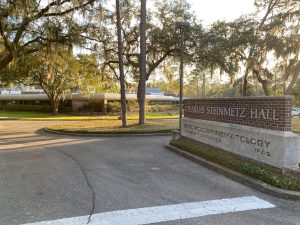
Figure 4. Steinmetz Hall: home of the Entomology and Nematology Department of Florida. Photo: Chris Oster, University of Florida
The “college” (in my example: IFAS) is composed of many departments. The UF HBREL is housed in the Entomology and Nematology Department (Figure 4). We have ~70 professors and over 150 graduate students in our department, making it the largest entomology department in the U.S. IFAS has other departments as well: Animal Science, Food and Resource Economics, etc. The point is that most “colleges of agriculture” will be the home of a department where most of the state’s entomologists reside. Unfortunately, there are not many standalone departments of entomology in the U.S., or not as many as there once was. Most of these departments have been combined with one or more departments in an effort to cut costs. For example, you often seen departments with long names, perhaps like the Department of Horticulture, Fisheries and Entomology. I suspect you can guess which three departments were lost to make that one department. The important point here is that a given state’s bee lab is often housed in the LGUs Department of Entomology, or whatever mega-department includes the entomology faculty.
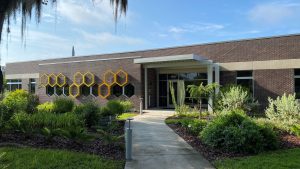
Figure 5. The University of Florida Honey Bee Research and Extension Laboratory. The new facility formally opened in August 2018. Photo: Chris Oster, University of Florida.
A department, then, is composed of many labs. The labs are managed by single faculty members. As noted, our Entomology and Nematology Department is home to about 70 faculty. Each (me included) manages his/her own lab (Figures 5 and 6). We have labs that focus on termites, mosquitos, bed bugs, crop pests, insect physiology, etc. I work in the lab that focuses on honey bees. I know that this can get confusing but here is a good way to think about the flowchart from university to bee lab: university > college/school > department > honey bee lab. As noted, there are multiple colleges, multiple departments, and multiple laboratories at UF. It may help to think about it this way. The University is the entire body. The college is an arm (i.e. one among many appendages/colleges). A department is a hand (one part of one appendage/college). A laboratory is a finger, and an important one at that.
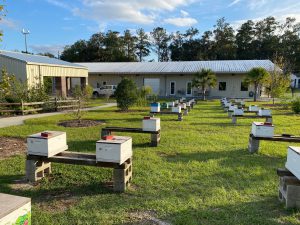
Figure 6. One of the Honey Bee Research and Extension Laboratory’s research apiaries. Photo: Chris Oster, University of Florida.
The UF HBREL
When hired, I was assigned appointment percentages in research (20%), teaching (10%) and extension (70%), given I work at an LGU. Most of my colleagues (in fact, most faculty at UF) only have a two-way appointment (i.e. two-way appointments are far more common than three-way appointments), usually in teaching and research. Because of my appointment, my team and I are required to conduct research on honey bees, teach students about honey bees and conduct extension programs on beekeeping. We actually weave all three appointments into our lab’s mission statement:
“The mission of the [HBREL] is to advance our understanding of managed honey bees in Florida, the U.S. and globally, with a goal of improving the health and productivity of honey bees everywhere. We address this goal by conducting basic and applied research projects on honey bees, communicating our findings to assorted clientele groups through diverse extension programming, and training future generations of bee educators, researchers, conservationists and more.”
In the articles that follow, we will share our strategy for accomplishing our mission. We will introduce you to the types of jobs in the lab. We will tell you how bee research labs are funded, how we decide what to study, and how we educate the world about honey bees.
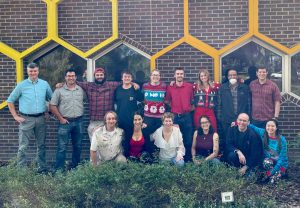
Figure 7. Current and former members of the Honey Bee Research and Extension Laboratory. Photo: University of Florida
When hired, I was the sole manager of the HBREL. Then, something amazing happened. The Florida State Beekeepers Association led a charge to acquire funding to build a new research, teaching and extension facility dedicated to honey bees at UF. That allowed my program to grow immensely. As a result, UF invested in two additional faculty positions at the HBREL. We hired Dr. Cameron Jack (Assistant Professor, 30% research, 70% teaching) and Amy Vu (100% extension) in the last two years. Together, Amy, Cameron and I administer the lab’s research, teaching and extension programs focused on honey bee health and beekeeping sustainability. We get along fabulously and are fortunate to work with amazing staff, students, postdocs and volunteers (Figure 7).
I know that this article may not have taught you much about how to manage bees. However, I hope it laid the groundwork for the next 11 articles in the series. I really cannot wait to share with you how it all works (in the words of Ronald Reagan: “How the sausage is made.”), and make you an honorary member of the HBREL in the process. Thanks for being willing to take the journey with us, as we work to improve the health and productivity of honey bees everywhere.
Jamie Ellis
Gahan Endowed Professor
Honey Bee Research and Extension Laboratory
Entomology and Nematology Department
University of Florida
jdellis@ufl.edu
www.ufhoneybee.com









